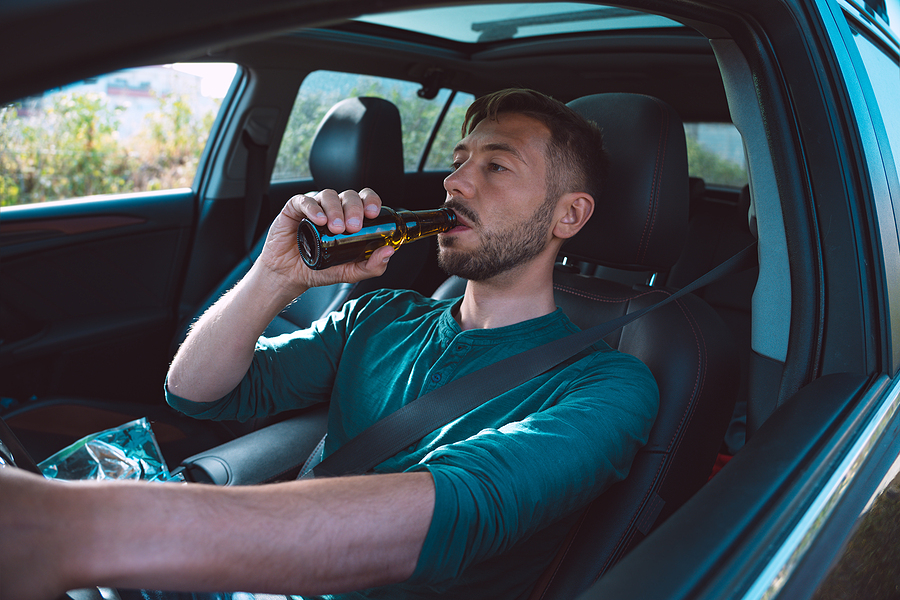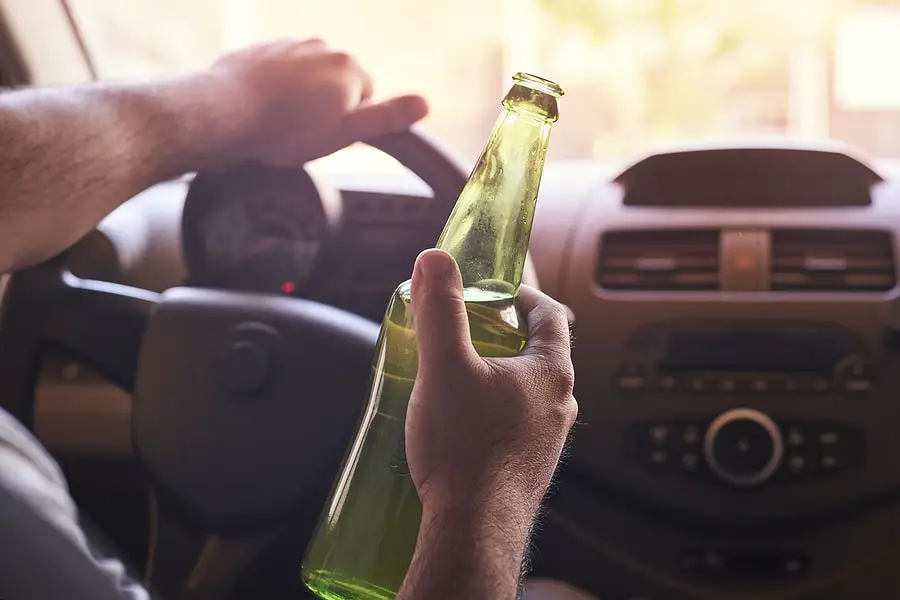Driving while drunk is an extremely serious offense that presents considerable dangers to not only the impaired driver but also to others on the road. Reporting suspected drunk driving is one of the most important things a citizen can do to promote road safety and prevent accidents.
In this comprehensive guide, we will take you through the steps you need to take to effectively report a drunk driver. Reporting incidents is a proactive way to protect your community, potentially preventing loss of life and promoting a safer road environment for all.
Table of Contents
ToggleRecognizing Signs of Drunk Driving
If you want to report a drunk driver promptly, you should be able to identify the indicators of intoxication while on the road. Here are the key signs to watch out for that may suggest a driver is impaired by alcohol:
Erratic or Aggressive Driving Behavior
Keep an eye out for drivers who exhibit behaviors such as drifting between lanes, making sudden lane changes without signaling, tailgating other vehicles closely, excessively speeding or slowing down, and abruptly braking without apparent reason. These erratic and aggressive driving actions are often indicative of impaired judgment and a severe lack of control over the vehicle.
Inconsistent Speed Control
Pay attention to drivers who consistently drive significantly above or below the speed limit. Speed fluctuations are extremely dangerous and mainly indicate poor driving skills or drunk driving. Erratic acceleration or deceleration and struggling to maintain a consistent speed are indicators of a lack of focus, and these mostly result in terrible accidents.
Poor Judgment and Reaction Time
Watch for drivers showing slowed-down responses to traffic signals and delayed reaction times while braking or accelerating when the light changes. They may also make abrupt stops or starts, fail to yield the right-of-way when required or disregard traffic rules, signs, or signals altogether. These signs point to diminished cognitive capacities and a reduced ability to make sound judgments.
Distracted Driving
Notice some actions that may point to limited or no attentiveness, which are common traits of an intoxicated driver. If a driver is swerving within their lane, weaving from side to side, driving in the wrong direction on a one-way street, or coming dangerously close to colliding with other vehicles, objects, or curbs.
Observable Impairment Indicators
Keep an eye out for physical signs that may suggest impairment, signs that can strongly suggest that the driver is under heavy alcoholic influence and hence unsuitable to handle a vehicle safely. These include slurred speech, bloodshot or watery eyes, the odor of alcohol coming from the vehicle or the driver, or visibly impaired coordination.
If you notice any of these behaviors, contact local authorities and provide them with every little detail that you noticed so they can respond responsibly. Remember, when it comes to potential drunk driving accidents, it is always preferable to err on the side of caution.
Steps to Report a Drunk Driver

Here are some steps you can take to effectively report such incidents and assist law enforcement in their investigation:
Ensure Your Own Safety First
If you think a driver is intoxicated, you must prioritize your safety first and foremost before moving on to others. Keep a safe distance from the car in question and avoid engaging or confronting the driver immediately. Keep in mind that your primary goal is to report the incident, not to intervene actively. However, any necessary action you intend to take, like saving others or reporting the crime, must be done once you are safe.
Collect Vital Information
Gathering accurate and detailed information is key in helping law enforcement in their investigation. Take note of essential details, including the license plate number, make, model, and color of the vehicle involved. Additionally, record the location, date, and time of the incident. Providing these specifics will greatly assist authorities in locating and apprehending the suspected drunk driver, ensuring everyone’s safety.
Contact Local Law Enforcement
After you are done with the above-mentioned steps, immediately dial the appropriate emergency services number (such as 911 in the United States) or the non-emergency police line to report the incident. Stay calm and provide a clear and concise description of the situation, emphasizing the suspected impairment, the exact location, and the direction in which the vehicle is traveling.
Be a Reliable Witness
As a witness, your account of the incident holds significant value. When speaking to law enforcement, maintain a calm demeanor and provide accurate information. Describe the driver’s behavior and appearance objectively, without exaggeration or speculation. Your cooperation and reliability as a witness can greatly contribute to building a stronger yet genuine case against the offender.
Utilize Smartphone Apps or Hotlines
Many regions offer specific smartphone apps or hotlines dedicated to reporting drunk driving incidents. Familiarize yourself with these resources, as they may streamline the reporting process and provide additional features, such as photos or videos for evidence. These tools can enhance the accuracy and effectiveness of your report.
Avoid Following the Vehicle
While it is important to maintain visual contact with the suspected drunk driver, it is strongly advised not to pursue or follow the vehicle. Engaging in pursuit can significantly increase the risk of an accident or escalate the situation further. It might also put you in harm’s way. Instead, let law enforcement professionals who are trained to handle such matters safely and effectively do their jobs.
Provide Feedback When Possible
In some instances, law enforcement agencies may request feedback on the outcome of your report or ask for additional information. If you feel comfortable doing so, provide any requested feedback to assist authorities in their investigation and improvement of their processes. Your input can help refine their strategies for combating drunk driving and enhancing public safety.
Conclusion
Reporting a drunk driver is a responsibility we all share to ensure the safety of our loved ones, our communities, and ourselves. By recognizing the signs of impaired driving and promptly reporting suspected incidents, we can play an active role in preventing accidents and potentially saving lives. Remember, your vigilance and cooperation with law enforcement authorities can make a significant difference in promoting road safety.

I am a passionate beer connoisseur with a deep appreciation for the art and science of brewing. With years of experience tasting and evaluating various beers, I love to share my opinions and insights with others and I am always eager to engage in lively discussions about my favorite beverage.
















